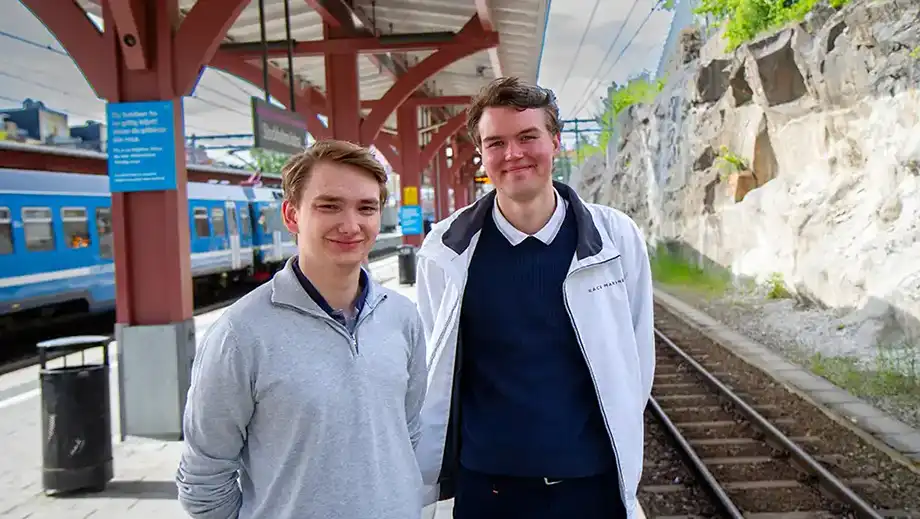Their student project is reshaping train safety

When KTH students Isak Jarbo and Johan Allberg started working on their bachelor’s thesis, they hardly knew what braking curves were. Today, their report has laid the foundation for a change in Swedish railway safety – and both have landed part-time jobs with the Swedish Transport Administration.
The two met during the first-year introduction and have stuck together ever since. Three years later, they’ve not only completed their bachelor’s thesis side by side – their findings are now driving real changes in railway safety. Both are also working part-time at the Swedish Transport Administration.
“We didn’t even know what braking curves were when we started,” recalls Isak Jarbo with a smile.
The idea for their thesis came during one of KTH’s regular Railway Evenings, where companies and public agencies present real-world projects for students to get involved in.
“I’ve known for a long time that I wanted to work in the railway sector and I’d taken a course in signalling systems, but braking curves were completely new to us,” says Isak.
Braking curves are an essential part of ATC (automatic train control), Sweden’s automatic system that makes sure trains follow signals and speed limits. Within ATC, there’s a mode called soft supervision, designed to apply extra gentle braking if the tracks have low friction – but it can also cause the braking distance to become dangerously long.
“You get the stop signal too late and might not have enough distance to brake in time. That’s a safety risk,” explains Isak.
“The train behaves differently and there’s not enough margin for error, which our simulations clearly demonstrated,” adds Johan Allberg.
Experts on soft supervision
The Swedish Transport Administration asked the pair to investigate the real-world consequences of using soft supervision. It turned into a detective-like assignment: Johan dived into decades-old manuals from the 1990s, while Isak focused on current regulations.
“The ATC system itself isn’t that hard to grasp. The real challenge was understanding how everything fits together,” says Johan.
Today, both confidently call themselves experts on soft supervision in Sweden. And as of June 1st, the setting is being discontinued — a decision based directly on the students’ research.
“It’s pretty amazing that, even at bachelor level, you can work on something with such real impact. You don’t expect that while you’re still a student,” says Isak.
Both students now combine their studies with part-time roles at the Swedish Transport Administration, continuing their work on train safety one day a week.
With the railway sector facing a wave of retirements, attracting young engineers is a high priority — and KTH’s Railway Evenings have become a key networking platform.
“It’s great to already have a foot in the professional world, to get involved and meet people in the industry,” says Johan.
“It’s also good to get a feel for real working life — at university you can make three mistakes on an exam and still pass. That doesn’t fly in the workplace,” he adds with a laugh.
Text: Anna Gullers
